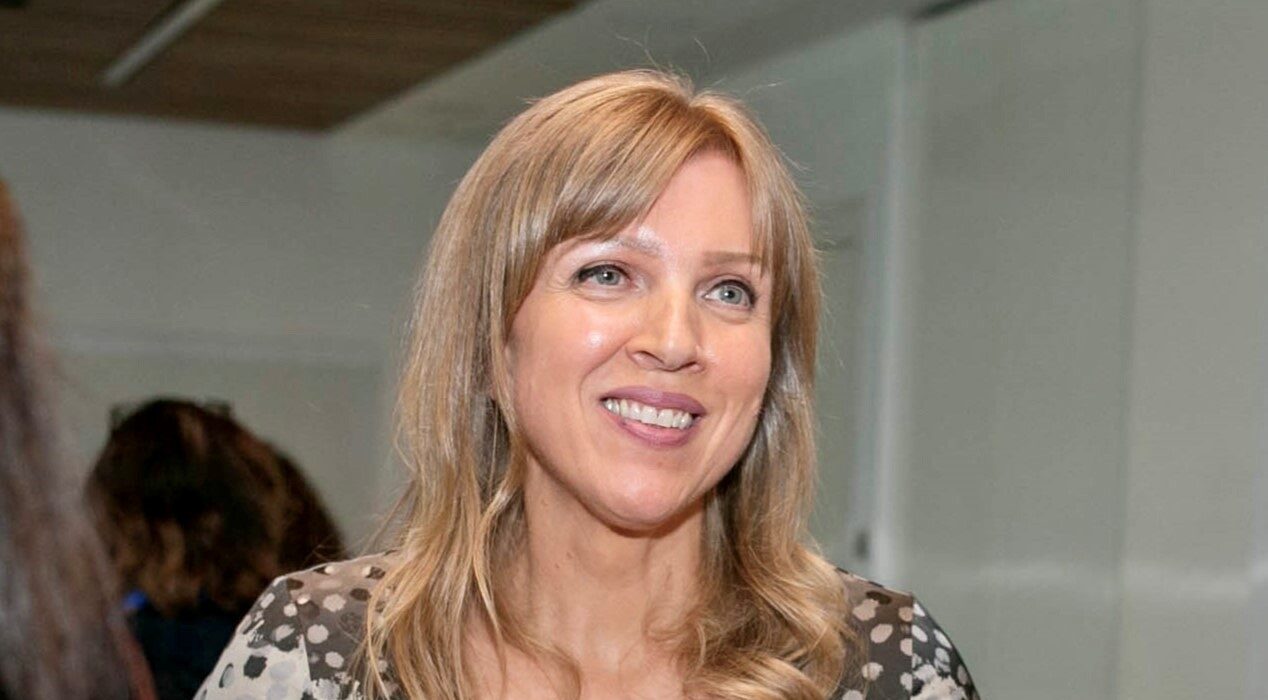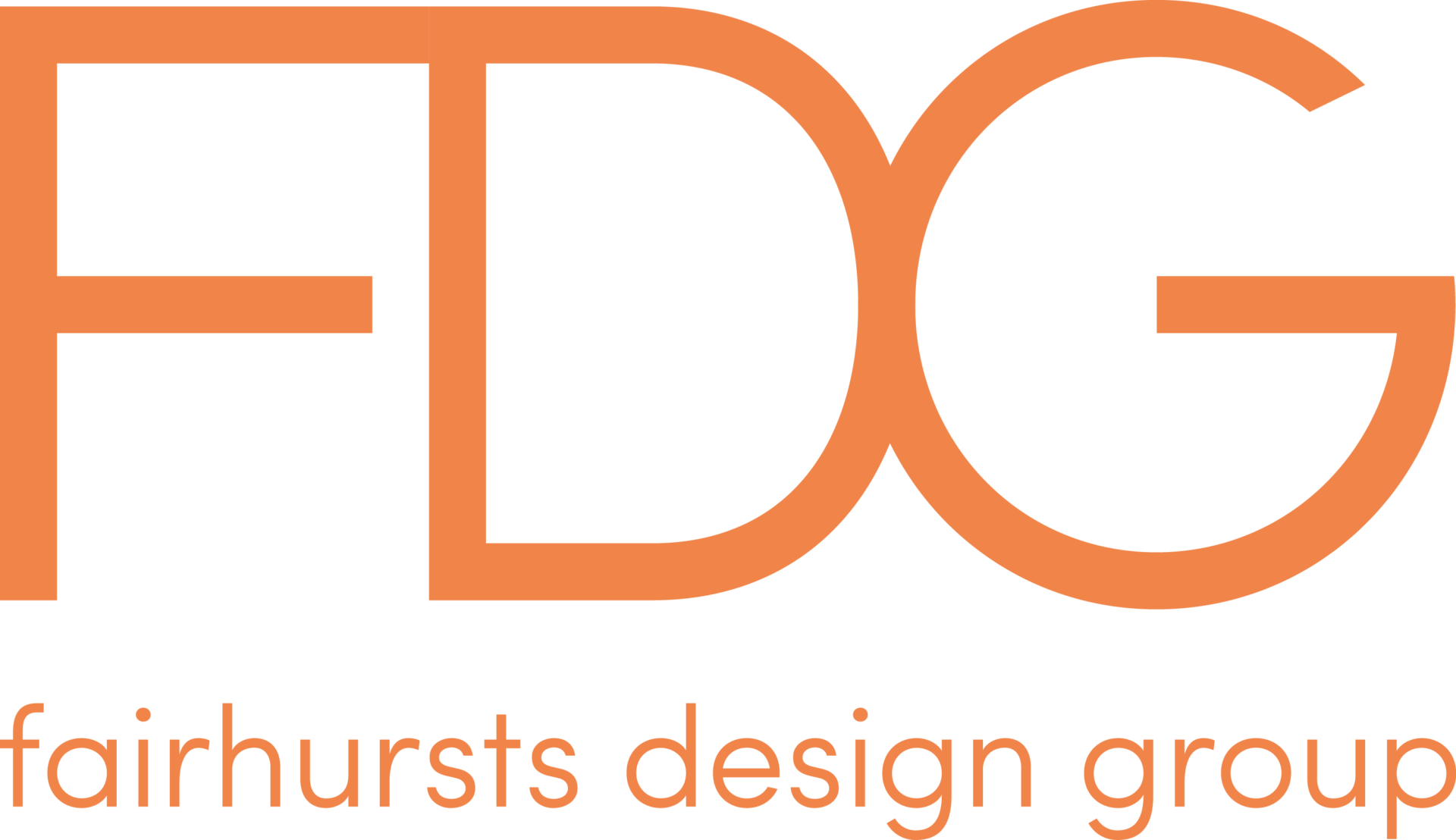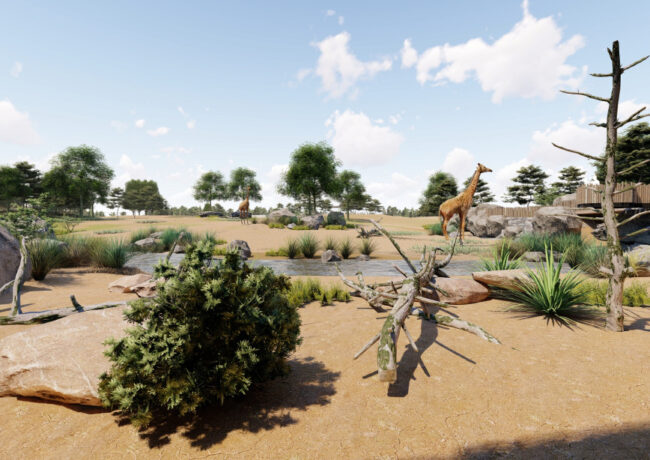Commentary
Office 2.0: Exploring the missing ‘link’
The design choices we make when crafting a workspace can transform the way teams interact by helping drive collaboration, encourage communication, and create an office culture, writes Marion Room of The Fairhursts Design Group.
By definition, the purpose of a successful workplace is to cultivate an environment that promotes connectivity and collaboration, aiming to achieve innovation and generate increased levels of productivity. However, our thinking around the workplace environment, and its suitability for cultivating business activity, has evolved significantly since the pandemic.
Post-pandemic working habits have proved that the notion of workplace is not exclusively tied to a single physical location. Advances in technology have enabled remote working and collaboration within teams located around the world. Whilst the physical environment is still important, the format of the office is changing.
Reimagining proximity in an agile work environment
In the 1980s, MIT professor Thomas Allen concluded that the majority of workplace collaboration takes place within an eight-metre radius of an individual and reduces to nearly zero beyond the distance of 50 metres.
The ‘Allen Curve’ remained valid even after the introduction of email, as employees continued to most frequently exchange messages with colleagues they sat closest to in the office. It appears proximity can be the driver of collaboration, working relationships, and a shared sense of belonging.
In cultural terms, these are called strong links. These links are reinforced through time spent in a physical office where the design of the environment embodies the culture and branding of the organisation. On the other hand, weak links are connections and bonds that do not follow normal organisational hierarchy.
However, organising the cultural and physical environment to support the likelihood of weak connections can lead to increased success in terms of broader collaboration, invention, and productivity. For example, commercial enterprises can benefit from being co-located with science organisations or, similarly, media productions with technology companies.
Spotify, for instance, is made up of ‘squads’, ‘tribes’, ‘chapters’, and ‘guilds’. Squads are cross-functional teams. Tribes are made up of workers in a related area of the business. Chapters contain people in similar roles with shared areas of expertise, whereas guilds are ‘communities of interest’ open to anyone.
These cultural links are a mixture of strong and weak links intended to promote the cross-pollination of ideas and encourage innovation.
The role of physical spaces in cultivating cultural links
The building serves as the flagship, reinforcing and enriching the sense of belonging to an organisation and its culture. The design of the office should inspire employees to want to spend time within it. Therefore, careful consideration needs to be given to the internal planning to accommodate strong links and nodal points that will encourage ‘collisions’, which increase the likelihood of weak link encounters.
As architects and interior designers, FDG recognise the impact hybrid and flexible working practices has had on flagship spaces. The once bustling open-plan offices of the pre-pandemic era, with fully occupied rows of workstations, can now feel empty and dystopian, lacking in enrichment. This shift can lead to a diminished sense of belonging, impacting staff morale, and subsequently reducing productivity.
To counteract this, alongside incorporating smaller workstations, designated breakout areas such as meeting booths can effectively break up larger spaces, recreating the sense of density and belonging reminiscent of the fully occupied, pre-pandemic offices.
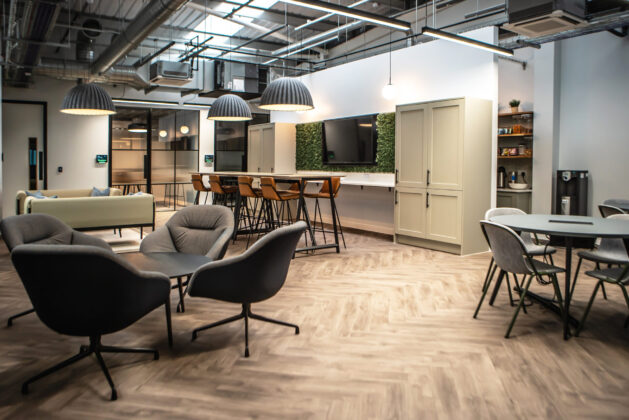
Our working environments now need to embody and portray an increased sense of cultural significance. For example, the cultural identity of the organisation can be reflected in the internal arrangement of space and deliberate use of materials and colours tied to corporate branding.
The office environment has to work hard to compete with the increasing number of viable alternatives such as coffee shops and our homes. As well as being a place productivity, the office needs to provide opportunities to socialise, eat, and enable us to focus on our wellbeing.
Workplace designers are taking design cues from the hospitality sector due to a desire for concierge-led service from the amenity spaces. Warmer and softer tones are being used for décor, giving rise to terminology such as ‘resi-mercial’. In short, the workplace needs to offer more than its new rivals to entice us to spend time there.
Wellbeing and sustainability have become key priorities for tenants, influencing workplace specification and design. Organisations, embracing models like B Corp, now consider what were once aspirational goals as standard expectations. For example, Nabers 5.5 Stars, BREEAM Outstanding, EPC A rating, and WiredScore Platinum are some of the desired levels of accreditation that tenants expect before they will even view a prospective new workplace environment.
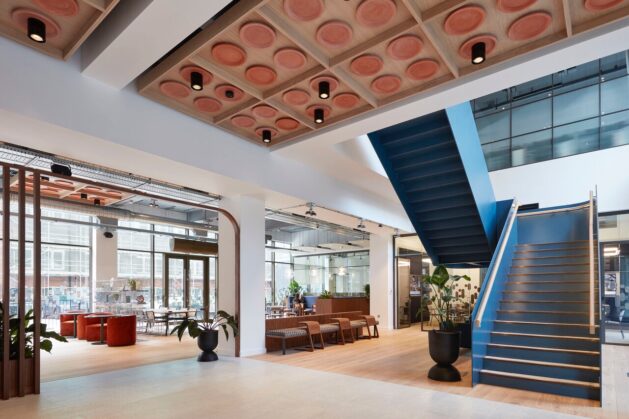
The future of the workplace
FDG’s experience in the science sector has taught us the advantages of fostering curated community ‘clusters’ to drive innovation. It is evident that the key to the future success of commercial workplaces lies in adopting a similar approach.
The strategic curation of space, fostering cross-cultural collaboration and bringing together complementary typologies, forms micro-communities that expand opportunities for weak links when flagship workplaces are co-located within the same building. Creating an agile physical environment that promotes weak links allow new forms of innovation to emerge and increase our understanding of new problems and enable solutions.
At FDG, our USP is to look past the traditional and see how buildings can be imagined – and reimagined – to facilitate this exciting and engaging vision of a future at work.
- Marion Room is a director at The Fairhursts Design Group


